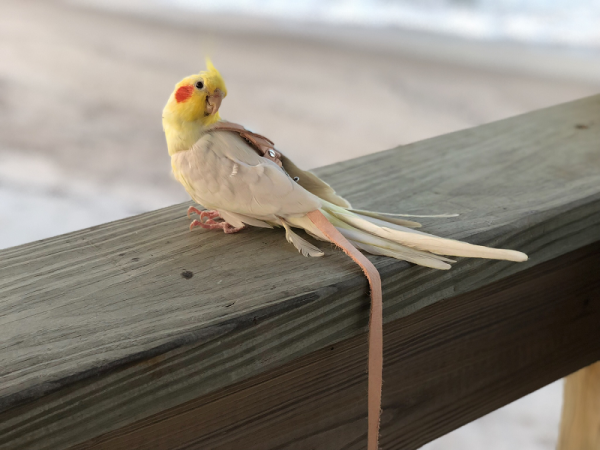19
Jun

Some of us like furry friends, others prefer them feathered. If you’re in the latter group, you enjoy listening to the beautiful melodies your bird treats you with, and in the case of parrots and macaws you have fun hearing them imitate words and teach them words yourself.
However, if you want to have an even better relationship and allow them to enjoy some outdoor air every once in a while without the fear they’d fly away and get lost then you should start thinking about harness training and the first step to go about it is by acquiring the adequate harness for birds based on your bird’s size.
You won’t have to worry about harm because the harnesses are created to safely absorb impact shock in case of unexpected flying to the end of the leash. Now that it’s winter time it’s the perfect time to train your bird because it’s a process that takes time so it might take you through to summer (perfect season for outdoor fun!) to get the wanted results or at least make an improvement, the point is not to give up and be as patient as you can.
Hey, if a girl can train her parrot to guard her you can train yours to behave! As soon as you purchase the suitable harness for birds, it’s important to give your bird the time it needs to get used to having it wrapped around its body because there’s a thin line between training success and fear of the harness and training process altogether.
In case putting on the harness is unsettling, do it bit by bit, don’t force it or you risk causing aggressive behaviour. Same as with cats and dogs treats are always a great option to make your bird feel comfortable with the harness but a word of caution is not to go overboard and end up using more treats than necessary and spoiling your feathered friend in the process, instead of only using them to reward improvements with the training.
A little TLC is also highly appreciated, if that’s what your bird prefers over treats, and don’t forget to take things slow. Be attentive to the behaviour and the experience, whether it’s pleasant or uncomfortable so you’d be able to implement the techniques that lead to a positive outcome.
You may not be up for harnesses or this kind of training but truth is it’s very helpful when you want your bird to make the most of both the indoors and outdoors. A bird that isn’t fearful and is trained to behave won’t have trouble around new people and noises.